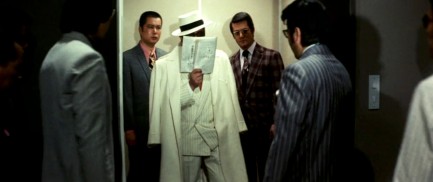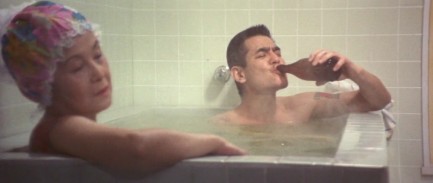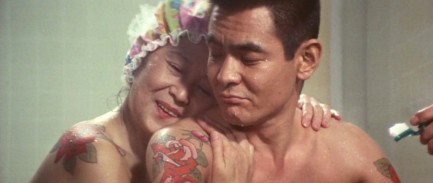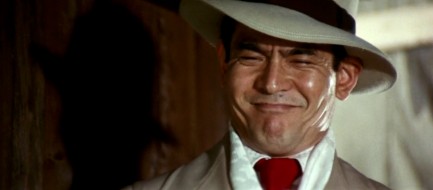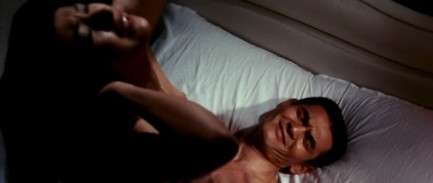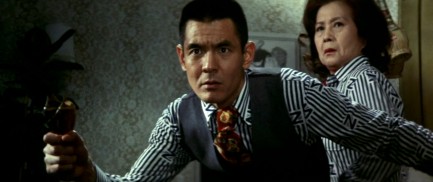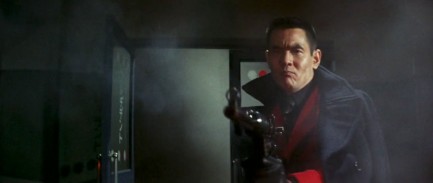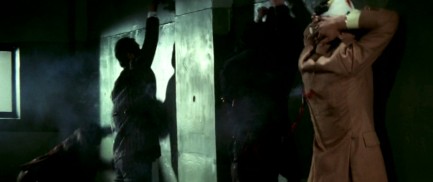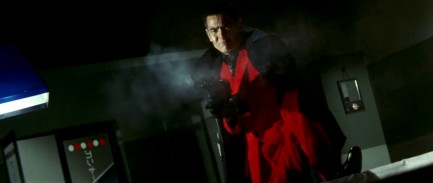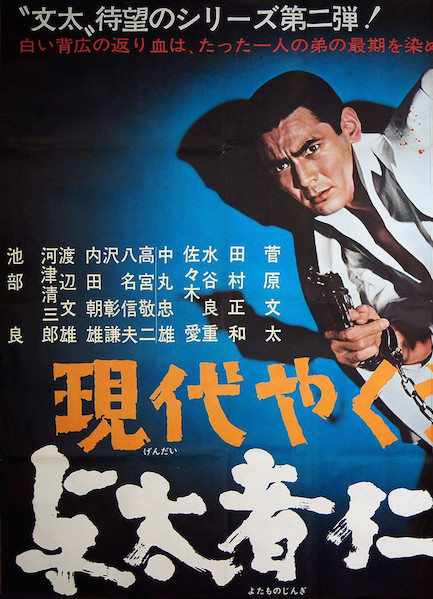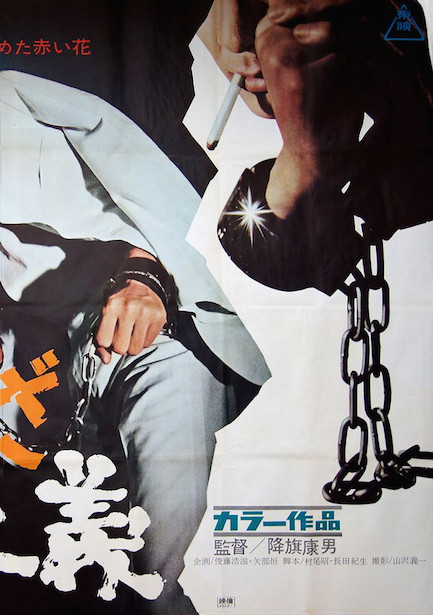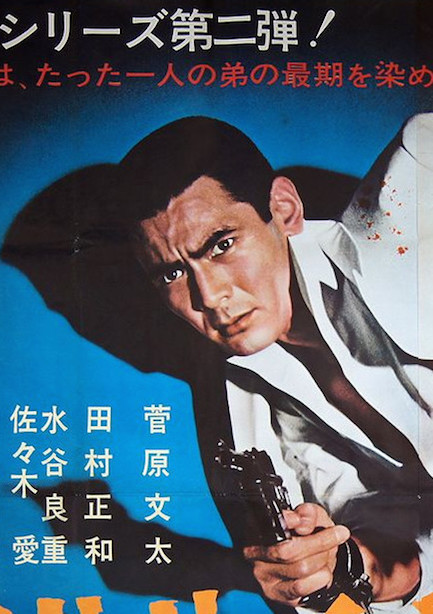 Oshida makes her mark and it looks like a swastika. 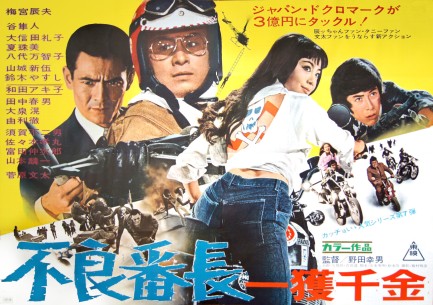
Above is a bo-ekibari style poster for the pinky violence actioner Furyô banchô: Ikkaku senkin, aka Wolves of the City: Fast Money. This piece is cousin to the standard sheet for the film we shared a couple of years ago. Just as when we showed you that one we haven't located the movie yet, but we'll keep working on it, if only to find out why star Reiko Oshida has a swastika on her back. We're guessing she's in a motorcycle gang, and it's their emblem. Furyô banchô: Ikkaku senkin premiered today in 1970. You can see the other poster here, and that entry also discusses briefly the swastika symbol in Japanese culture.
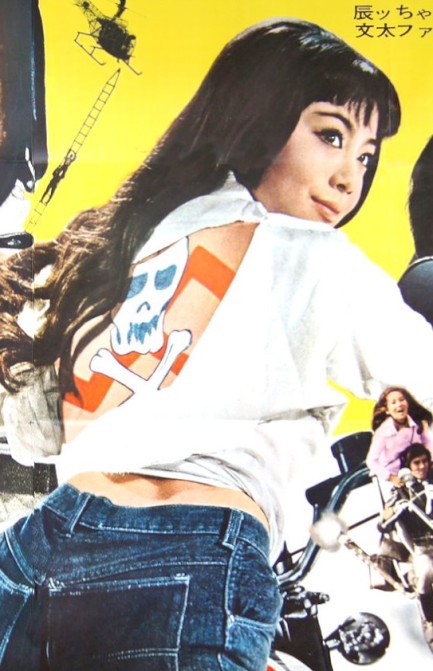
 Serious trouble just rolled into town. 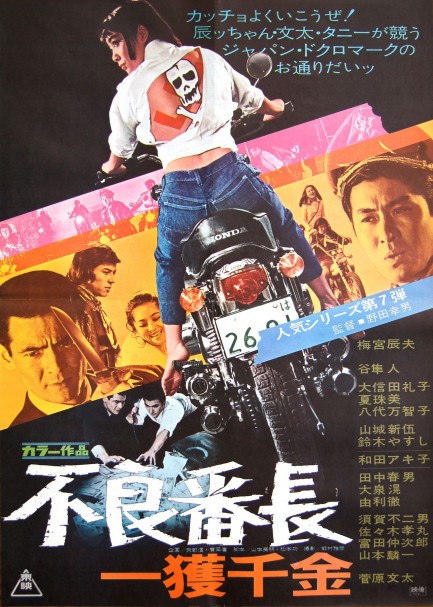
Furyô banchô: Ikkaku senkin, for which you see a killer poster above, was known in English as Wolves of the City: Fast Money, or sometimes Wolves of the City: Instant Fortune. It starred Tatsuo Umemiya, Reiko Oshida, and Bunta Sugawara, and we hear it's good, but we weren't able to find it to watch. We may circle back to it, though, because we located more promo art Toei Company made for it—for example the cool photos of Umemiya and Oshida you see below. You notice the swastika tattoo on Oshida's back? We've mentioned before that the symbol's usage predates its appropriation by Nazi Germany, and has different meanings in Japan. However, in this case we suspect those meanings—good luck, eternity, etc.—have been set aside and the filmmakers meant to use the symbol's association with Nazis to suggest rebellion or lawlessness. If asked, they may have claimed they weren't, but they'd have been messing with people's heads in the same way as the Prussian cross in this post was meant to. But we won't know until we watch the film. We'll keep the rest of our promo material in reserve in case our search is successful. Furyô banchô Ikkaku senkin premiered in Japan today in 1970. 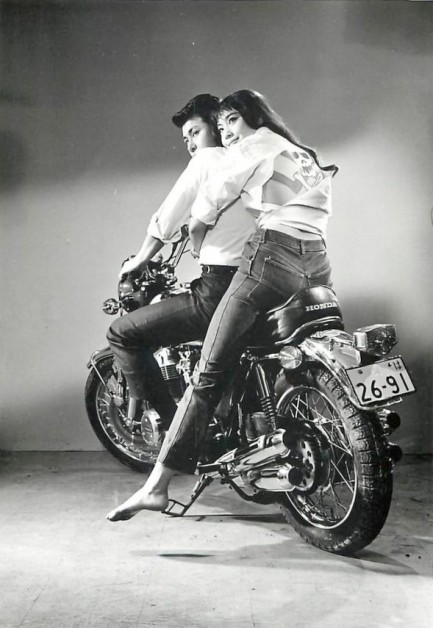 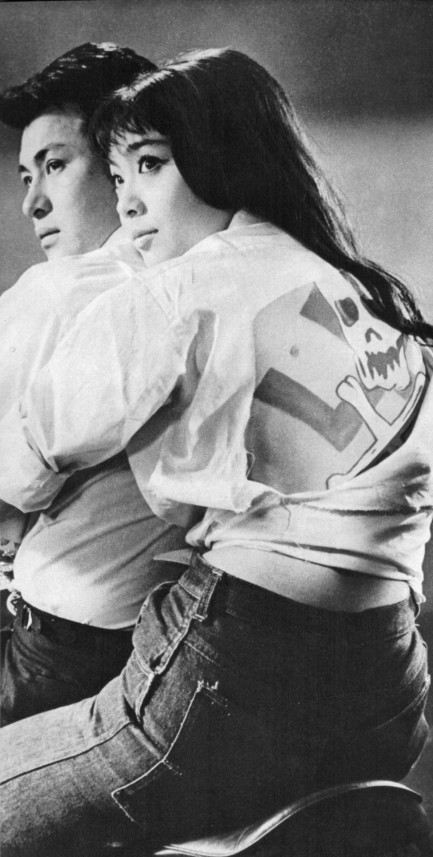 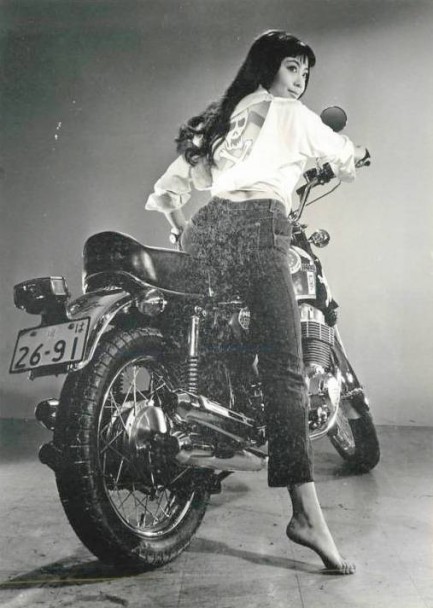
 Bunta Sugawara spits hot lead in Machine Gun Dragon. 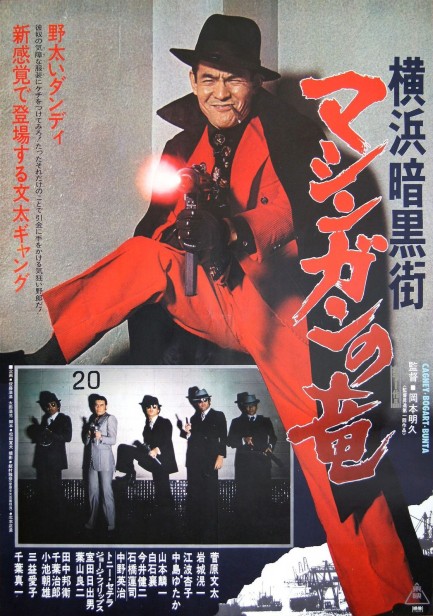
Cagney! Bogart! And... Bunta? This poster, if you look at the text in the righthand margin, suggests that Bunta Sugawara is a gangster on that level. We'll see about that in a minute, but one thing is sure—this is a kick-ass image of him. It was made for his crime flick Yokohama ankokugai mashingan no ryu, known in English as Yokohama Underworld: The Machine-Gun Dragon. Sugawara plays a rogue gunman, thief, and fashion plate who decides to rob the Matsumi yakuza clan of a billion yen worth of drugs. Ill gotten gains are hard to keep in crime movies, so you know already what the story arc is here: the people he robbed come looking for him. However, there are some quirks. For example, Sugawara has a disturbingly close relationship with his mother. The two take baths together, as mom dispenses parental wisdom like, “The most important thing in the world is money. A guy without money is garbage. He might as well not have a dick,” while peeking at Sugawara's dick, which thankfully is out-of-frame. It's under mom's influence that Sugawara robs the Matsumi group, a heist the pair pull off in the first moments of the film. They plan to hold the goods until the heat cools, but another gang deduces that Sugawara was involved and demands half the drugs for not turning him over. The cops are soon closing in too, since the robbery resulted in a quadruple homicide. Eventually, Sugawara engineers his own arrest. It's the only way he can avoid capture by the yakuza, and in jail he can presumably regroup. But Matsumi has men inside. Those men have no idea how ruthless and resourceful Sugawara is, and in the film's best sequences he shows how survival inside this particular prison is about who's willing to be the most vicious. He doesn't spend long in jail, which means that upon release his problems still must be faced. But fire breathing dragons are very hard to kill. As hard as Cagney and Bogart? Well, let's just say that if Bunta goes out, he'll go out guns blazing. Yokohama ankokugai mashingan no ryu premiered in Japan today in 1976.
 Sugawara gives the red light to wartime slavery. 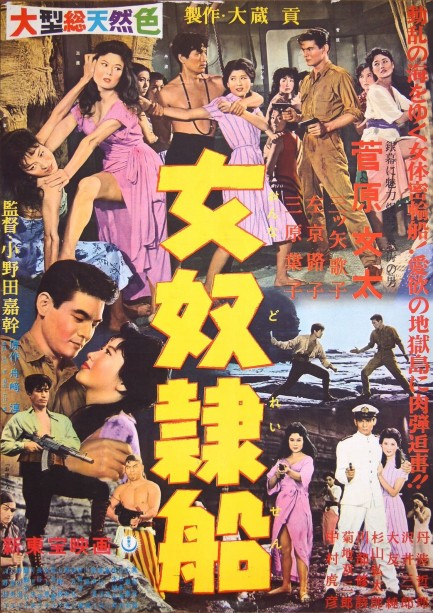
This blazingly colorful promo poster was made for the action movie Onna dorei-sen, known in English as Female Slave Ship, which is set during World War II and follows the adventures of a navy lieutenant played by Bunta Sugawara. The tale begins with him sent on a secret mission to obtain radar schematics to help salvage Japan's waning war fortunes, but unfortunately his plane is shot full of holes by a squadron of American F4Fs and he ends up in the drink. He's picked up by a Shanghai bound China boat, or slave ship, carrying twelve women meant to be auctioned to a gathering of Epsteins. Eleven of the women are prostitutes, but Rumiko, played by the lovely Utako Mitsuya, was tricked onto the boat. Naturally, she and Sugawara form an instant connection. Can he save her? You can be sure he'll try his best.
But just when you think Female Slave Ship is a straightforward white-knight-saves-damsel tale, the slave ship is attacked by pirates, and the women and Sugawara are suddenly at the mercy of the most ruthless band of unbathed thugs ever to steam the East China Sea. After some onboard drama the vessel lands, not in Shanghai but on a rocky Chinese coast where traffickers plan to brand and sell the women. This obviously can't stand, which means Buntawara must somehow throw sand in the gears. Why he's even alive at this point is a question. He's been nothing but trouble to the pirates, and the simplest solution would have been to toss him to the sharks. Failing to do that will be a costly and contusion making error.
We wanted to get away from Nikkatsu Studios' misogynistic roman pornos for a while and this effort from Shintoho Film fulfilled the requirement. Well, mostly. While generally tame, you'll rarely see so many women slapped around. But the treatment is meant to outrage. Mission accomplished. You will hate these traffickers. As for the movie overall, we suspect you'll like-not-love it. It's done in broad strokes, but as a sort of surf-to-turf soap opera it mostly works fine. Sugawara, who was soon to become a cinematic icon, has a charisma befitting his burgeoning status. And Yôko Mihara, already a big star at this point, is enjoyable playing a slippery slaver whose allegiances shift with the tides. She and Sugawara are worth seeing. Female Slave Ship premiered in Japan today in 1960.
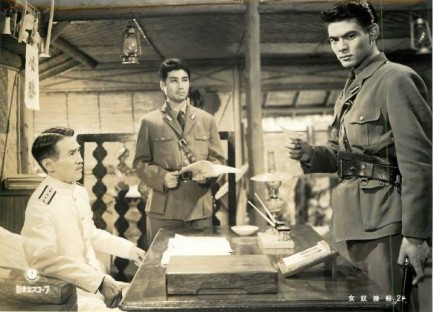 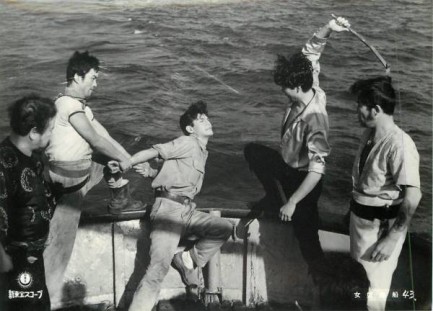 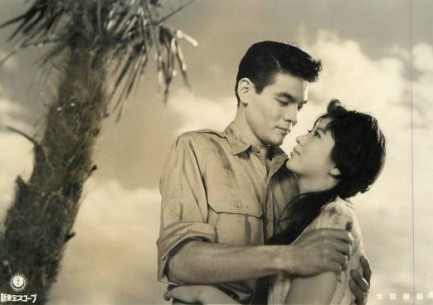 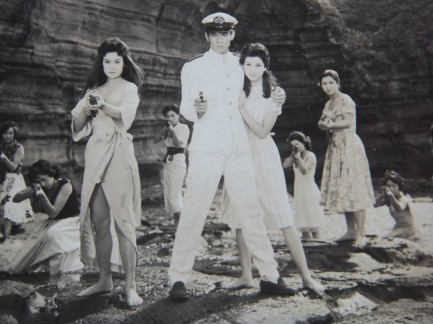 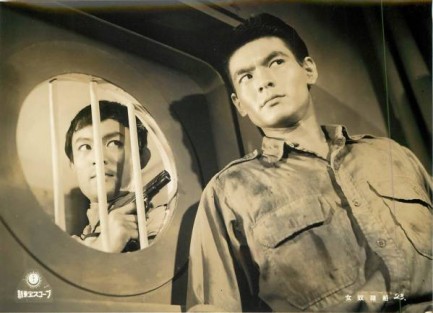 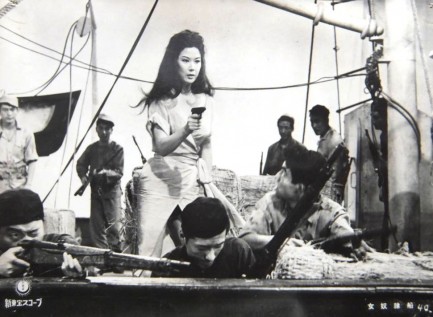 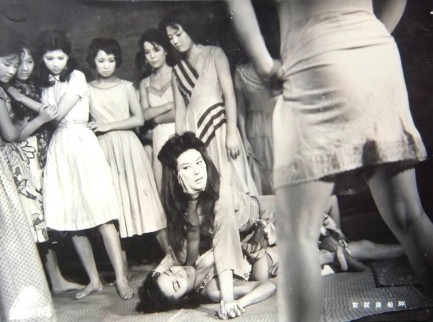
 Yôko Mihara dives into a family mystery. 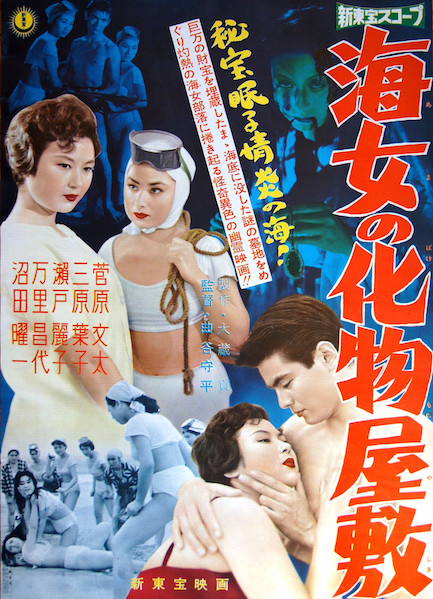
This poster was made for the Shintoho Film Co. genre mash-up Ama no bakemono yashiki. What genres were mashed? The English title should answer that for you—Girl Diver of Spook Mansion. Yes, it's a mixture of an ama flick and— Wait, should we define that for you? We've talked about this a lot, but in case you weren't around for those discussions, ama films deal with female divers who scoured Japan's bay bottoms for pearls, abalone, et al, and, according to strict tradition, did so topless. Look here, quickly. So that idea was combined with a ghost story. We gather that the ama genre was so popular that injecting novelty into it was a can't miss proposition. And in fact, most of the reviews we checked were favorable.
The movie is about an ama, played by Yôko Mihara, living in a creepy old house and being haunted by her younger sister's ghost, which nobody else can see. Though others are skeptical at first, Mihara manages to secure help in the form of Bunta Sugawara. Sounds like a winner to us. Hopefully we'll confirm that later, since this film is actually out there to be seen, but at the moment isn't available to us. At least we found this rare poster. There are a couple of scans of it online, but the version above is better quality than those. We also found a few promo images, and they appear below. Ama no bakemono yashiki, aka Girl Diver of Spook Mansion (another aka was Haunted Cave) premiered in Japan today in 1959. 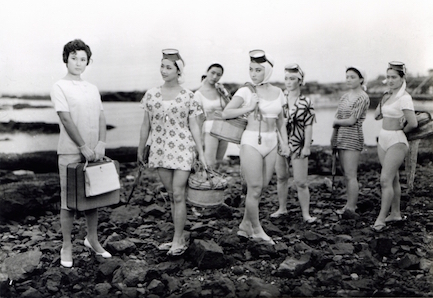 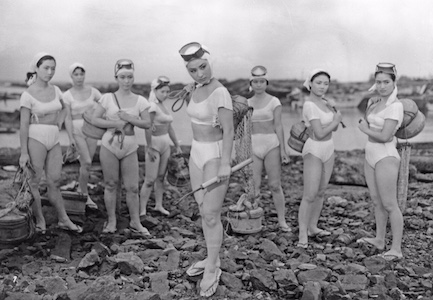 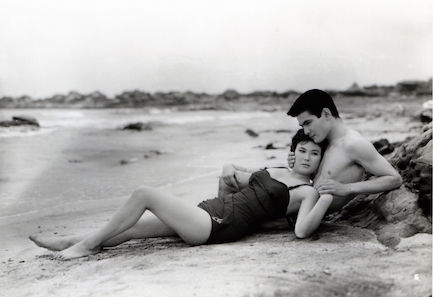 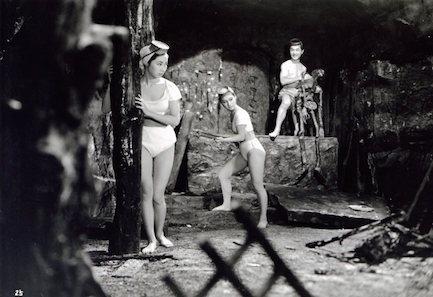 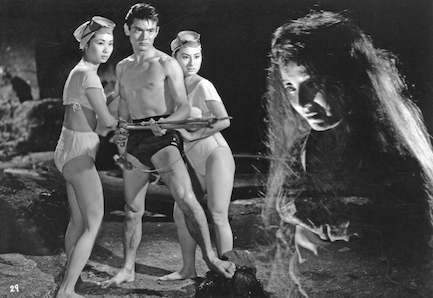 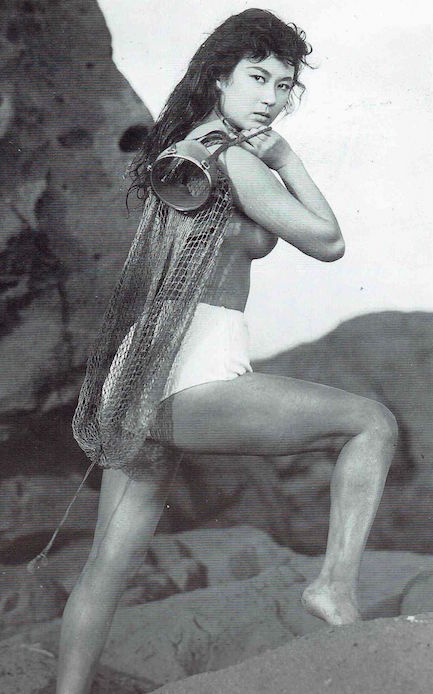
 There's only one way out and it isn't retirement. 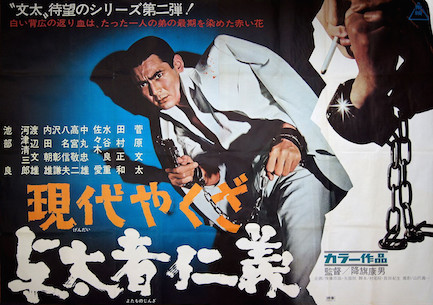
Above is a poster for Gendai yakuza: yotamono jingi, aka Hoodlum Yakuza, which premiered in Japan today in 1969 and starred Bunta Sugawara as a yakuza footsoldier trying to escape the life. He wants to run away with his girlfriend, and with the help of his brother hatches a scheme he hopes will make his freedom possible. Fat chance. We shared a standard promo of this at the bottom of a collection we put together five years ago, but this piece is an exceedingly rare, horizontally oriented, two-piece promo, a style known as bo-ekibari. We have the halves uploaded separately below, and we have another rare poster for the film we'll share later.
 Crime, mayhem, and murder in Japan. 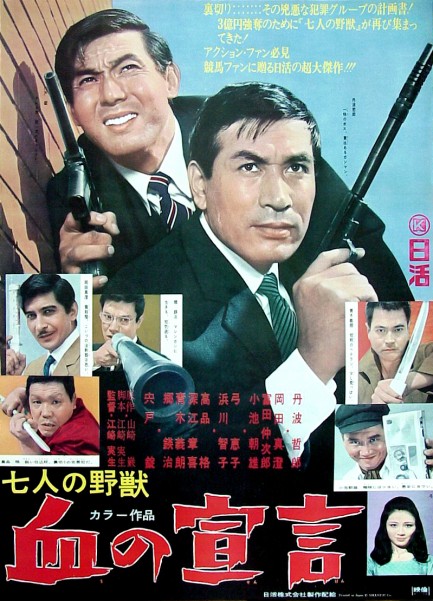 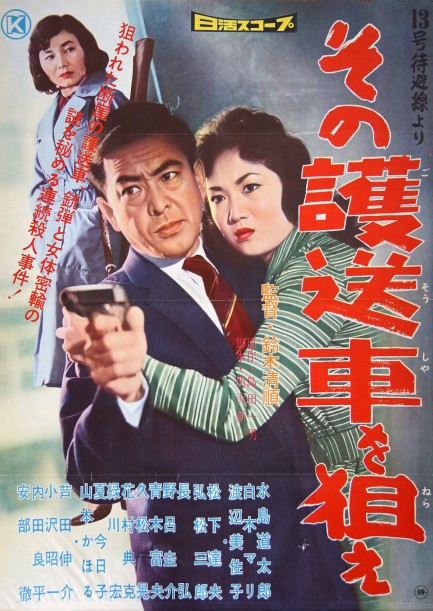 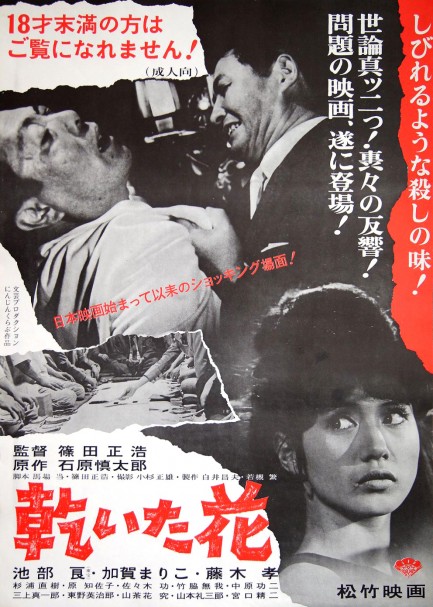  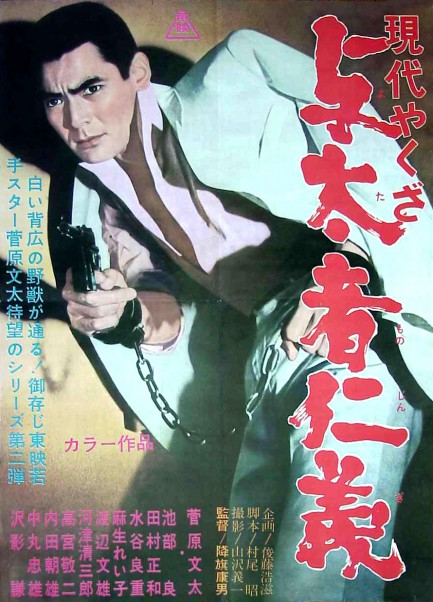 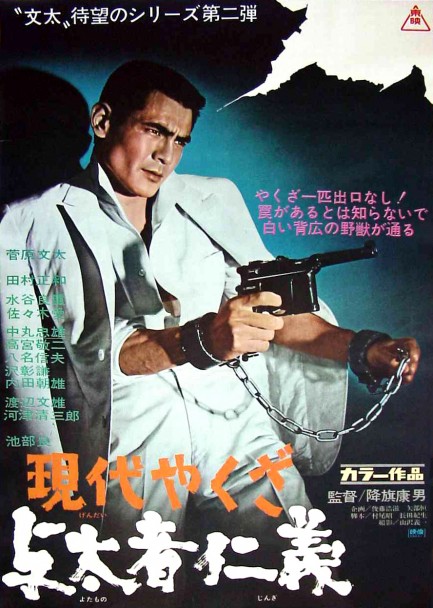
Above, six Japanese posters for 1950s and 1960s gangster movies. These are, top to bottom, Shichinin no yajû: chi no sengen, aka Return of the Filthy Seven, Sono gosôsha wo nerae: “Jûsangô taihisen” yori, aka Take Aim at the Police Van, Kawaita hana, aka The Pale Flower, Kutabare akutô-domo—Tantei jimusho 23, aka Detective Bureau 2-3: Go to Hell Bastards, and finally two versions of Gendai yakuza: yotamono jingi, aka Hoodlum Yakuza.
|
 |

The headlines that mattered yesteryear.
2003—Hope Dies
Film legend Bob Hope dies of pneumonia two months after celebrating his 100th birthday. 1945—Churchill Given the Sack
In spite of admiring Winston Churchill as a great wartime leader, Britons elect
Clement Attlee the nation's new prime minister in a sweeping victory for the Labour Party over the Conservatives. 1952—Evita Peron Dies
Eva Duarte de Peron, aka Evita, wife of the president of the Argentine Republic, dies from cancer at age 33. Evita had brought the working classes into a position of political power never witnessed before, but was hated by the nation's powerful military class. She is lain to rest in Milan, Italy in a secret grave under a nun's name, but is eventually returned to Argentina for reburial beside her husband in 1974. 1943—Mussolini Calls It Quits
Italian dictator Benito Mussolini steps down as head of the armed forces and the government. It soon becomes clear that Il Duce did not relinquish power voluntarily, but was forced to resign after former Fascist colleagues turned against him. He is later installed by Germany as leader of the Italian Social Republic in the north of the country, but is killed by partisans in 1945.
|

|
|

It's easy. We have an uploader that makes it a snap. Use it to submit your art, text, header, and subhead. Your post can be funny, serious, or anything in between, as long as it's vintage pulp. You'll get a byline and experience the fleeting pride of free authorship. We'll edit your post for typos, but the rest is up to you. Click here to give us your best shot.

|
|










